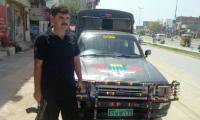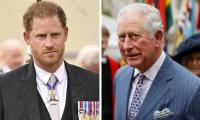Let’s bust the most obvious myth first. The myth goes: the tribal Pakhtuns are the ones that let in Al-Qaeda and the Taliban, gave their sons over to them to fight first Nato/Isaf and later the Pakistani Army, so they shouldn’t really be blaming the Pakistani state for the ordeal of living through war.
This is nonsense for several reasons, but the most important is not because of the facts of how and why terrorist groups found safe haven in the Federally Administered Tribal Areas (Fata) in the first place. The most important is demographics. Take the average twenty-year-old Bajaur tribesman, or resident of Khyber, or a Mehsud from Waziristan. He was born some time in 1998. In 2011, when Osama bin Laden’s life ended in Abbottabad, today’s twenty-year-old was twelve or thirteen years old. How much control over your tribe or clan or family does your two-year-old or six-year-old or eight-year-old or thirteen-year-old boy or girl have?
Even if we are to assume that all agency or authority for who came to the tribal areas and what they did there was up to the tribes themselves, the decisions that produced war in Fata were not made by the young men and women that have trended the hashtag #PashtunLongMarch over the last two weeks. The young men and women that have trended this hashtag are victims of those decisions. It is obviously and patently nonsensical for anyone to ask why the Mehsuds don’t protest against themselves for being vulnerable to, first, the penetration of the alphabet soup of terrorist groups that made their homes in Waziristan, and then to the military operations that have cleared those groups out of the territory that is supposed to be sovereign to Pakistan.
The fact that Mehsuds have initiated a protest against the Pakistani state is a confirmation of their citizenship, an affirmation of their patriotism, and a dire wake-up call for the elite in Pakistan, both non-Pakthun and Pakhtun. It is also a reminder to ordinary Pakistanis who have remained ignorant of the trials and tribulations of Pakhtuns living in the tribal areas as well as those living elsewhere, all around the country. It is time for us to take stock of what being Pakhtun has meant, means today and should mean in the future.
For over five decades Pakistan’s elite had a very sweet deal: “you control your hordes, we will control ours; we will split the gains, put on a lot of vacation weight and live happily ever after”. This deal was the defining state of play within communities, between communities, within the country and beyond it. For the deal to work, the elite needed to ensure that ordinary people were either so content that they would never question the social contract or so distracted with other, more urgent, affairs that they would never have the time to. In the cities, if the deal did not work for someone, they could use their education to move up or move out and migrate, or they could adopt affiliations that would help protect them. The MQM’s tanzeemi structure, Sipah-e-Sahaba’s rank and file, and the Jamaat-e-Islami’s student permutations via the IJT and Pasbaan all represent examples of such affiliations.
In the villages, when the deal would not work for someone, one of two things would happen. Either they would either get crushed by the bulldozer of the various tools at the disposal of the elite – money, the police, dirty judges, dirtier MNAs and MPAs, and straight up gangsters. Or they would be co-opted by the local elite’s vast structure of acquiring, sustaining and deepening power. At a minimum it would put the vocal village aspirant in contention for any number of benefits that accrue to the affiliation with that structure. This could lead to a public-sector job, as a constable in the police, or a primary school teacher, or if slightly more educated and presentable, at PIA. It could also lead to prominence in political hierarchies – and each of the three main parties in the country have a rank and file that offer some measure of testament to the efficacy of the model.
All the while, the deal’s principal benefit is to the elite at the top. With very little effort, and a lot of lip service to the many ideals (justice, Pakhtunwali, mard-e-momin etc) that ordinary people hold dear and scared, this edifice could be sustained. In the small village in Sindh, there is the vadera. In Punjab, it has evolved from the landed Chaudhry to the industrial or contractor kingpin, in Balochistan it was the sardars, and in Khyber Pakhtunkhwa and Fata, it has been the Khans and the Maliks. These guardians of local fairy tales have all operated within a wider canopy of an amalgam of national fairy tales, the guardians of which are our armed forces. Things were just fine, until they weren’t anymore.
Every fairy tale has a twist, and the twist that has disrupted the sweet deal in Pakistan has been the same one that has disrupted it everywhere else over the last two decades. It has come courtesy of Bill Gates, Larry Page, Sergey Brin, Mark Zuckerberg and Jack Dorsey. The information asymmetry that has helped fuel the disequilibrium between the elite and the not so much has been demolished by the digital age.
The elite now? Well, they can’t walk so proud, and they can’t talk so proud. They are still firmly entrenched, still locked in with the decades of profits that the sweet deal has helped accrue for them. But there aren’t enough public sector jobs for everyone. There aren’t enough visas abroad for everyone. There aren’t enough bulldozers to drive over everyone. Dissent isn’t as risky today as it was when the late Asma Jahangir started doing it. And all this applies to the parts of the country that have not been in the thick of an actual war.
To understand the anger of the Pakhtun youth that assembled in Islamabad for ten days, we have to combine two distinct macro-level phenomena simultaneously. The disruption to the ‘lowering of the gaze’ culture that protects the elite from questions about fairy tales caused by the digital age. And the disruption to the safety, security, and livelihoods of ordinary people in Fata and Khyber Pakhtunkhwa, as well as the wider culture in the country, caused by the post-9/11 war that has been waged in Afghanistan, in Fata and across Pakistan.
We have a dated and dangerous understanding of what a ‘tribesman’ is. Thousands of tribesmen are educated, sophisticated and homeless. Unlike the homeless in Lahore and Gujranwala, these men’s homes were flattened either by terrorists, or during the military operations conducted to clear out the terrorists.
We can ask them to be respectful of the fairy tales that we hold in great esteem. Or we can try to hear their voices. Understand their anguish. Recognise their anger. Pakistani insecurity about international Pakhtun solidarity will not deter Pakhtuns from all around the world to profess their sincere affection and sympathy for their brethren. But it will drive away the angry young Pakistani tribesman with an MPhil who cannot go home to the land he owes to his unborn grandchildren. There is no quantum of over-the-top films, and poorly worded tweets that ISPR can generate to assuage that anguish.
The old sweet deal is dying everywhere, but it is dying faster in war zones. Pakistan’s war zones have been ignored, and the people living through war have been misrepresented. The next time we boast about what Pakistan has sacrificed during this war, we should take a moment and ask those that have been the sacrificial lambs: how did you like it?
The message from the #PashtunLongMarch is loud and clear for anyone wanting to hear the truth: “We didn’t. We don’t. And we’re done”.
We are going to need a new fairy tale. And a new deal.
The writer is an analyst and commentator.
India uses Afghanistan as a backstage area to carry out terrorist attacks against Pakistan
Another report by the Pakistan Institute of Peace Studies states that 78 per cent of attacks have been carried out by...
Pakistan stands at the forefront of this crisis, generating a staggering 3.3 million tonnes of plastic waste annually
Today, a total of 11,000 children are attending Daanish schools in Punjab
The emotional instability of parents inculcates a range of psychological issues in children
The current way of dealing with the environment and climate change is no longer adequate







